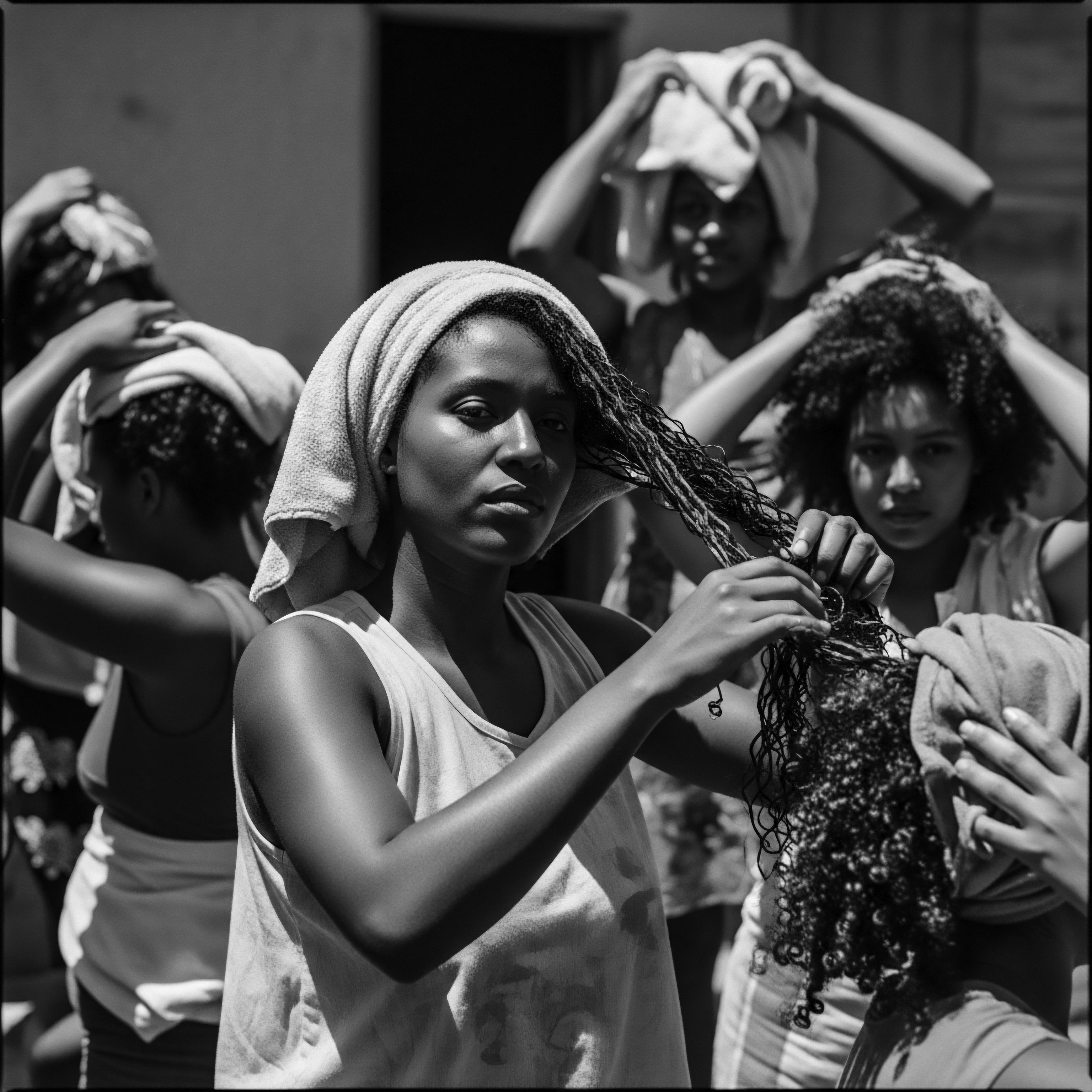
Fundamentals
The essence of Community Strength, when viewed through the profound lens of textured hair heritage, is not merely a collective gathering. Its fundamental meaning encompasses the interwoven resilience, shared wisdom, and mutual support systems that have historically sustained and elevated Black and mixed-race hair traditions across generations. This foundational understanding acknowledges that hair care, for these communities, has rarely been an isolated act. It is a deeply communal undertaking, a ceremony of connection, and a repository of ancestral knowledge passed down through touch, story, and observation.
At its simplest articulation, Community Strength within this context refers to the enduring power generated when individuals come together, pooling their experiences and resources, to preserve and celebrate their unique hair identities. It is the unyielding spirit found in communal braiding circles, the quiet tutelage from elder hands, and the comforting cadence of shared stories during hours of care. This collective spirit becomes a protective sheath, guarding against the pressures of societal beauty norms that often diminish the inherent beauty of textured hair. It fosters a space where hair is understood not as a burden, but as a crown, a narrative, and a direct link to one’s lineage.
Community Strength, for textured hair heritage, embodies the enduring power of collective wisdom and mutual support that safeguards and celebrates distinct hair identities.
The initial comprehension of Community Strength begins with recognizing its organic emergence from necessity. In many African societies, before the transatlantic passage, hair practices were communal by nature. Children learned from their mothers, aunts, and grandmothers, not just techniques, but the deeper cultural significance embedded in each twist, braid, or adornment.
This foundational transmission of practical skills and spiritual understanding became the bedrock upon which Community Strength was built. The act of sharing combs, oils, and styling tips, while seemingly simple, represented an active engagement with the group’s collective well-being and the perpetuation of its distinct cultural identity.
To delineate this concept further, consider the very act of preparing natural ingredients. For centuries, specific plants, butters, and oils were known within communities for their medicinal and cosmetic properties for hair. The knowledge of harvesting, processing, and applying these elements was not individual but a shared inheritance.
The collective memory of what works, what soothes, and what protects hair from various climates or challenges formed an invisible yet potent network of care. This collective intelligence, passed from one generation to the next, ensured the viability and vibrancy of hair traditions even in the face of immense change.
- Shared Knowledge ❉ The pooling of techniques, remedies, and styling wisdom across generations and households.
- Mutual Support ❉ The active provision of help, encouragement, and physical assistance during hair care rituals.
- Collective Resilience ❉ The community’s ability to maintain its hair heritage despite external pressures or challenges.
- Intergenerational Transmission ❉ The direct passing of practices and philosophies from elders to youth within a communal setting.
Understanding the elemental meaning of Community Strength in this context grounds us in the ancestral understanding that no strand exists in isolation. Each coil, kink, or wave is a testament to shared histories, shared struggles, and ultimately, shared triumphs. It acknowledges that the beauty and health of textured hair are intrinsically linked to the health and vitality of the community that surrounds it.
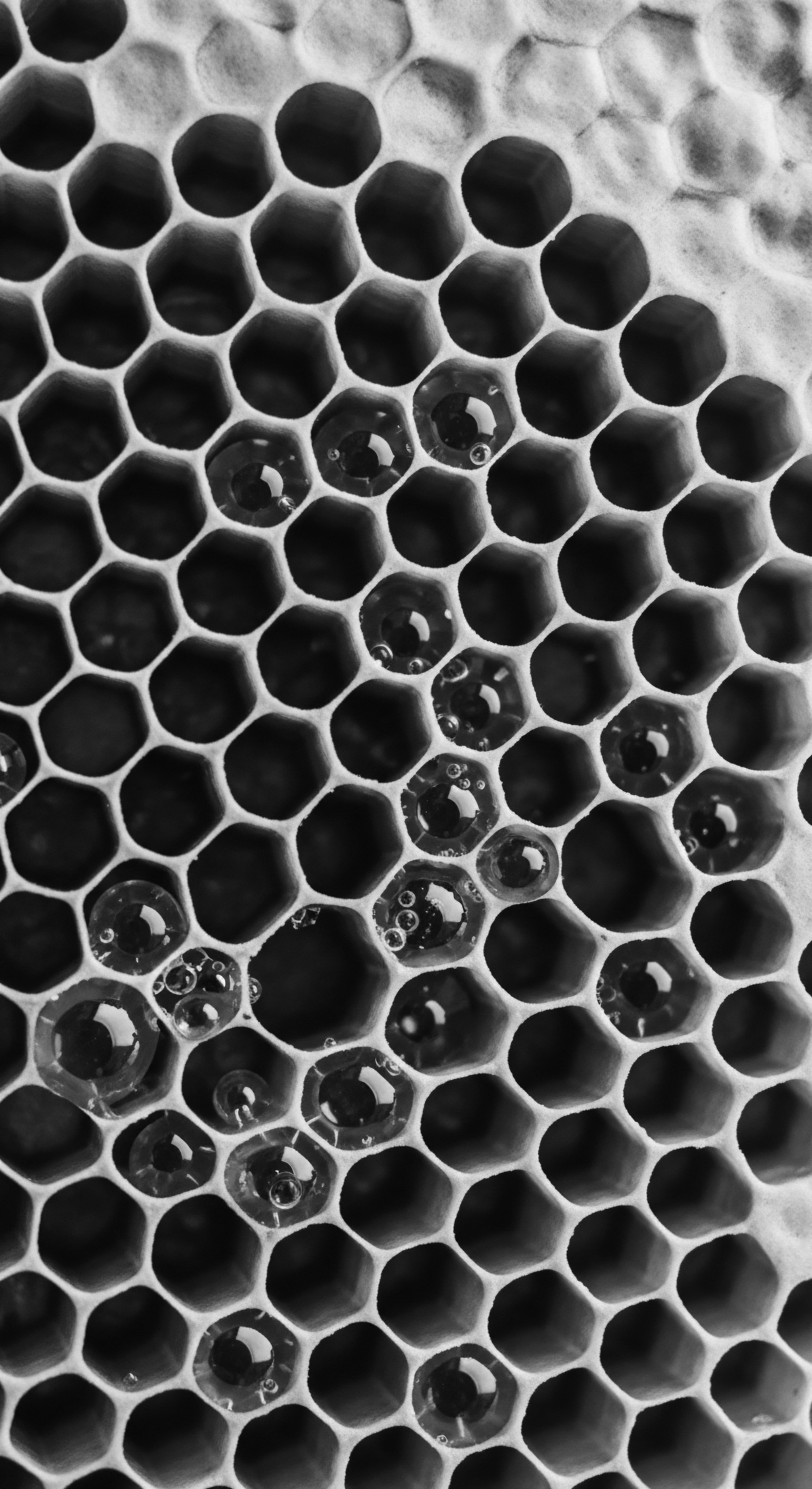
Intermediate
Moving beyond the basic framework, an intermediate understanding of Community Strength reveals its dynamic role as a living archive of textured hair traditions. It is a force that continuously re-shapes and affirms identity, especially within diasporic communities where cultural continuity often faced severe ruptures. This concept extends beyond mere shared practices; it represents an active and intentional communal preservation of a heritage intimately tied to personhood and collective narrative. The significance of this strength becomes strikingly clear when examining its deliberate cultivation as a counter-narrative to imposed beauty standards.
The collective memory within Black and mixed-race communities often holds the deep scars of hair discrimination, from the Tignon Laws that sought to mask the splendor of Black women’s hair in Louisiana, to contemporary workplace biases. In response, Community Strength has served as a powerful shield, allowing ancestral hair practices to persist, evolve, and remain a source of self-worth. This enduring presence speaks to a communal commitment to self-definition, where hair becomes a visible marker of heritage, a declaration of belonging, and an act of quiet defiance. The intention behind this strength lies in recognizing hair as a spiritual anchor, connecting individuals to their lineage and to one another.
Consider the elaborate rituals surrounding hair care in historical contexts, rituals that fostered profound social bonds. These were not solitary acts performed in private. They unfolded in vibrant communal spaces ❉ on front porches, in church halls, within family parlors, and even in clandestine gatherings. Here, stories were exchanged, grievances aired, and joys celebrated.
The rhythmic pull of a comb, the gentle parting of sections, the shared laughter, and the quiet murmurs of support solidified communal ties. This social fabric, woven strand by strand, created an undeniable collective strength that nourished not just the hair, but the very spirit of the community. The delineation of Community Strength here involves appreciating this social function as much as the practical one.
Community Strength acts as a living archive, actively preserving and affirming textured hair traditions as a vital aspect of identity and collective memory against external pressures.
An intermediate grasp also addresses the practical applications of Community Strength in transmitting specialized knowledge. Beyond general care, communities fostered expertise in specific styling techniques, ingredient sourcing, and scalp health. Elders, often revered for their extensive hair wisdom, became central figures in this transmission.
They weren’t just teaching how to braid; they were teaching why certain patterns held spiritual significance, when to apply particular oils based on lunar cycles, or how hair could serve as a non-verbal language. This deep, nuanced educational component was entirely community-driven, adapting ancestral practices to new environments while retaining their core meaning.
| Aspect of Care Ingredient Sourcing |
| Traditional Communal Practice (Historical Context) Shared knowledge of local plants, communal harvesting of butters (e.g. shea, cocoa) and oils (e.g. palm, castor). |
| Modern Communal Adaptation (Contemporary Context) Online forums and social media groups sharing reviews and DIY recipes for natural ingredients, supporting small Black-owned businesses. |
| Aspect of Care Grooming Rituals |
| Traditional Communal Practice (Historical Context) Communal braiding circles, evening detangling sessions, storytelling during hair care. |
| Modern Communal Adaptation (Contemporary Context) Natural hair meet-ups, virtual styling tutorials, shared salon experiences focusing on natural hair. |
| Aspect of Care Knowledge Transfer |
| Traditional Communal Practice (Historical Context) Oral traditions, direct apprenticeship from elders to younger generations. |
| Modern Communal Adaptation (Contemporary Context) YouTube channels, blogs, specialized workshops, and intergenerational family discussions about hair care. |
| Aspect of Care Affirmation & Identity |
| Traditional Communal Practice (Historical Context) Hair art as spiritual expression, ethnic markers, and symbols of social status. |
| Modern Communal Adaptation (Contemporary Context) Movements celebrating natural hair (e.g. #BlackGirlMagic), online communities promoting self-acceptance and diverse textured hair styles. |
| Aspect of Care Community Strength continues to bridge ancestral wisdom with contemporary expressions, ensuring the enduring vitality of textured hair heritage. |
The persistent vitality of hair textures, often defying colonial efforts to erase them, speaks volumes about this communal tenacity. The resilience of hair types deemed “difficult” or “unruly” by external gaze was bolstered by communities who understood their true nature. They formulated remedies, devised styles, and shared techniques that honored the hair’s inherent structure.
This collective validation became a powerful force against internalized oppression, maintaining a sense of inherent worth and beauty. The interpretation of Community Strength, therefore, becomes a recognition of this collective defiance and sustained self-definition.
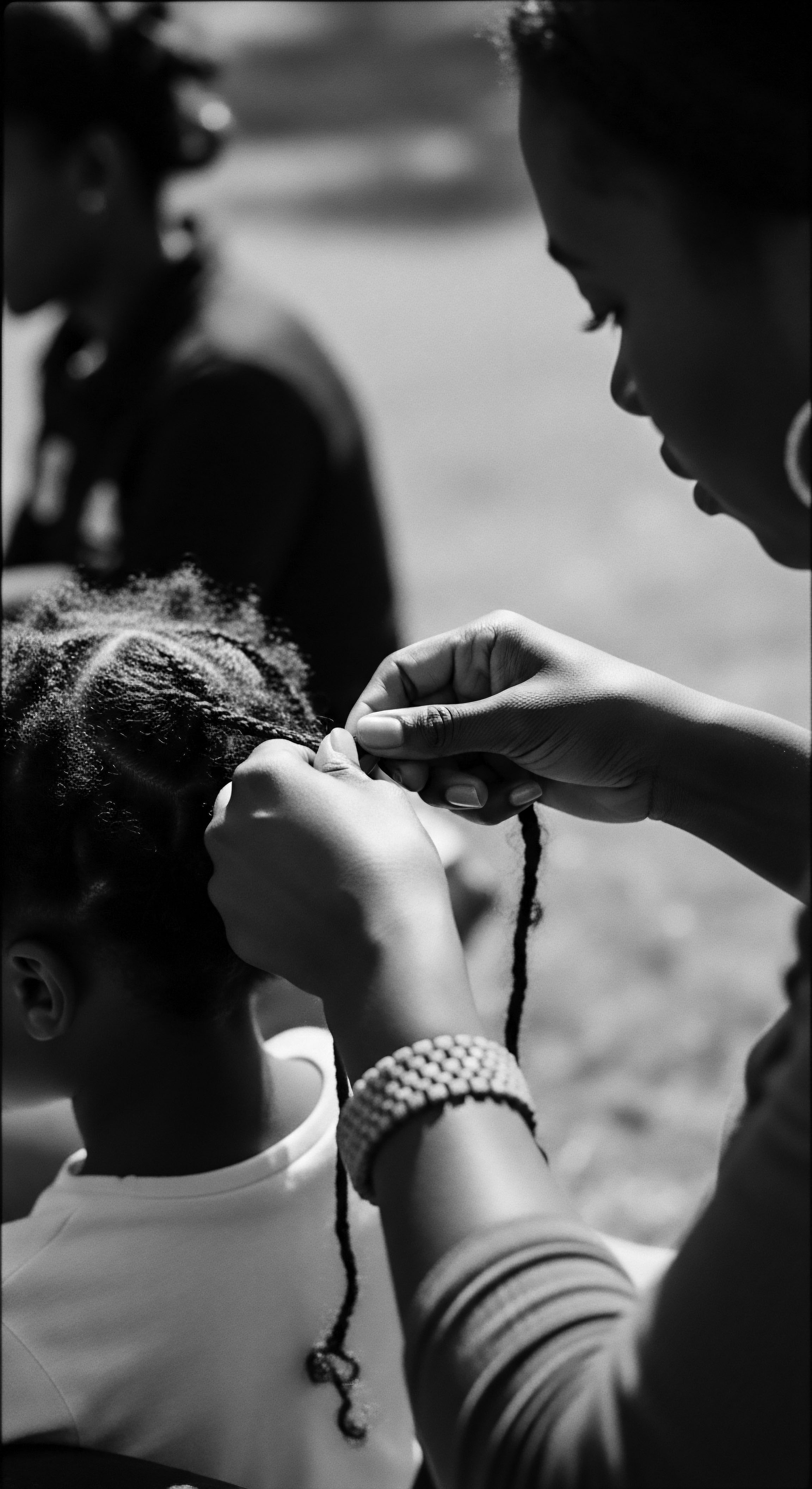
Academic
The academic elucidation of Community Strength within the purview of textured hair heritage establishes it as a complex, dynamic socio-cultural construct, fundamentally rooted in the collective agency and epistemic solidarity of Black and mixed-race communities. It represents the synergistic amalgamation of shared cultural capital, intergenerational knowledge transmission, and adaptive communal practices that have historically safeguarded the intrinsic value and distinct aesthetic of textured hair against systemic marginalization and epistemicide. This scholarly interpretation posits that Community Strength is not merely a descriptive term for group cohesion; rather, it is a prescriptive framework by which communities actively construct, maintain, and transmit a counter-hegemonic discourse of beauty and self-worth, thereby ensuring cultural continuity and psychological resilience through the medium of hair. Its meaning extends into the profound psychological and sociological impacts of collective identity affirmation through hair practices.
This conceptualization draws from frameworks in cultural anthropology and sociology, particularly those exploring the preservation of indigenous knowledge systems and the role of cultural practices in collective identity formation under duress. Community Strength, in this specialized context, is a testament to the adaptive ingenuity of human communities. It refers to the processes through which communal bodies—families, kin networks, religious congregations, mutual aid societies, and informal social circles—function as primary conduits for the preservation and evolution of specialized hair knowledge. This knowledge encompasses not only the technical intricacies of styling and care but also the deeply embedded spiritual, symbolic, and communicative functions of hair that existed in various African societies and persisted throughout the diaspora.

The Epistemic Resilience of Hair Knowledge in the Diaspora
One particularly compelling manifestation of Community Strength resides in the epistemic resilience demonstrated by Maroon communities. These societies, formed by self-liberated Africans and their descendants, often in remote and inaccessible terrains of the Americas, actively resisted colonial subjugation and forged autonomous cultural spaces. Their survival hinged not just on physical resistance but on the deliberate preservation of ancestral knowledge and social structures. Hair practices, in these contexts, became a critical vector for maintaining cultural distinctiveness and transmitting vital information, often in clandestine ways.
Consider the profound example documented in studies examining the ancestral practices of the Saramaka Maroon community in Suriname, descendants of enslaved Africans who escaped Dutch plantations in the 17th and 18th centuries. The Saramaka, in their deep forest enclaves, systematically recreated and adapted West African cultural forms, including intricate hair traditions. As meticulously detailed by Price (1993), Saramaka women, drawing upon deeply communal knowledge, continued the elaborate braiding practices that were not merely aesthetic but encoded with significant social and symbolic meanings. This included the use of specific botanicals for hair health and styling—ingredients whose properties were understood through generations of collective observation and experimentation in Africa, and then adapted with new flora in the Amazonian rainforest.
The collective knowledge of these plant-derived humectants, emollients, and anti-inflammatories, often applied during communal grooming sessions, represents a potent aspect of their Community Strength. It ensured healthy hair, yes, but also maintained a tangible link to an ancestral past, bolstering group identity in the face of profound dislocation. This shared ethnobotanical wisdom, passed down through touch and oral tradition within communal gatherings, served as a foundational pillar of their autonomy and cultural persistence. The specific application of plant-based remedies, such as those derived from Awara (Astrocaryum vulgare) oil or certain tree barks, known for their moisturizing and strengthening properties, illustrates this. This knowledge was communal, protected, and iterated upon through collective observation and practice, a clear example of Community Strength as an active, living force.
Community Strength, for textured hair heritage, is an active socio-cultural construct grounded in the collective agency and knowledge of communities.
Furthermore, the communicative function of hair within these communities underscores the academic meaning of Community Strength. Hair styles could signal marital status, age, lineage, or even serve as subtle, coded messages for escape routes or resistance plans during periods of active insurgency. This sophisticated semiotic system, understood and maintained communally, highlights how hair became an integral part of collective survival strategies.
The community’s shared ability to ‘read’ these silent narratives embedded in hair patterns, and to ensure their perpetuation through teaching younger generations, speaks to a profound level of collective intelligence and solidarity. The significance here lies not just in the individual’s ability to style hair, but the community’s collective capacity to interpret, safeguard, and transmit this complex visual language.
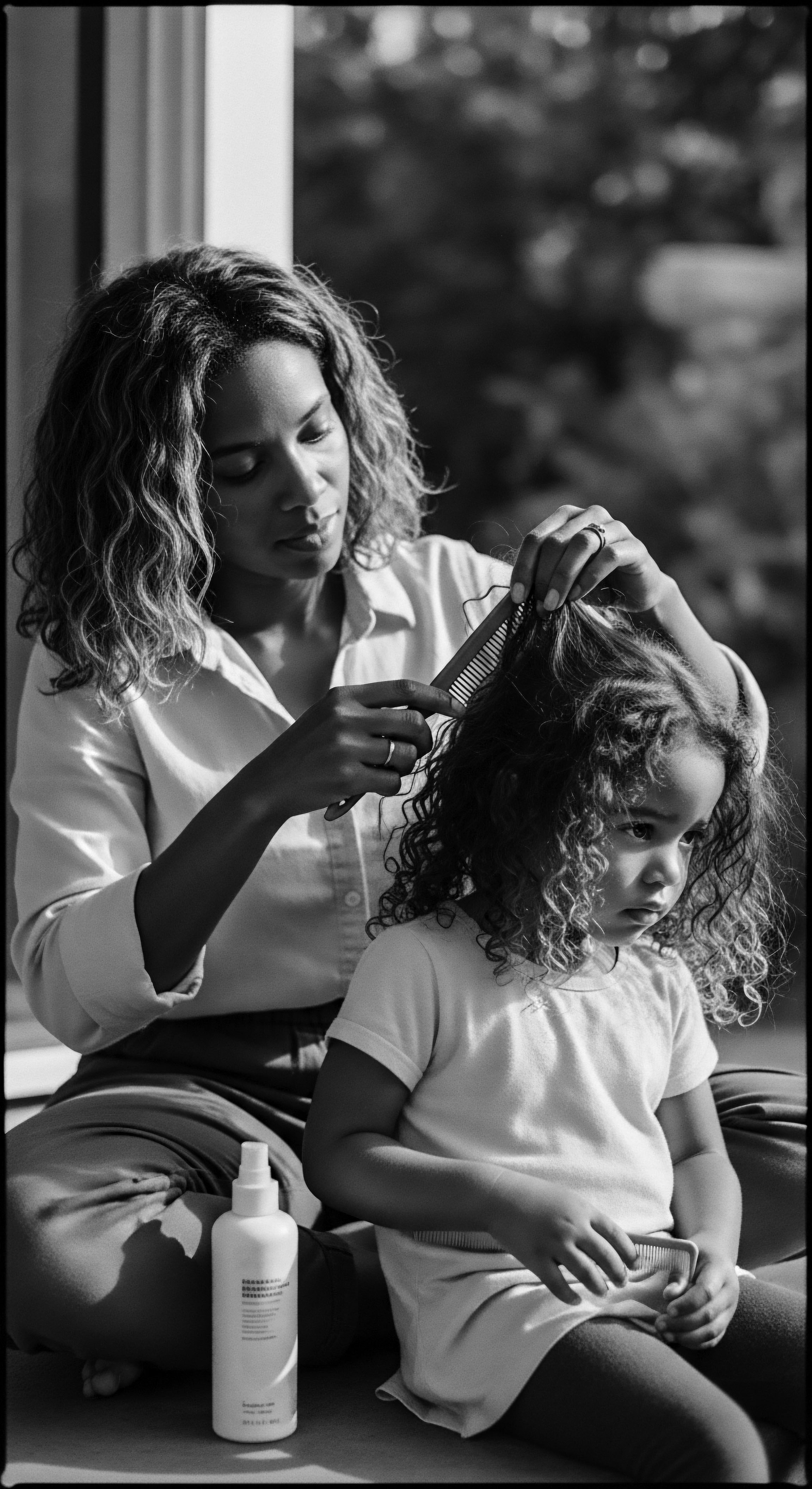
Sociological and Psychological Dimensions
From a sociological perspective, Community Strength functions as a mechanism for reinforcing intra-group identity and boundaries. The adherence to shared hair practices serves as a visible marker of belonging, distinguishing the group from external influences and fostering a robust sense of shared identity. This collective affirmation, particularly potent in environments where external forces seek to devalue specific cultural markers, mitigates the psychological impact of discrimination.
It builds collective self-esteem and cultural pride, fostering an environment where individuals feel seen, valued, and connected through their shared heritage. The delineation of Community Strength here considers its role in collective psychological well-being.
The long-term consequences of this cultivated Community Strength are evident in contemporary hair movements. The natural hair movement, for instance, finds its roots in these ancestral acts of collective self-affirmation. Modern collective spaces, whether physical salons dedicated to textured hair or expansive online communities, continue to exemplify this strength. These platforms serve as vital hubs for sharing product knowledge, styling tips, personal narratives of hair journeys, and challenging dominant beauty standards.
They offer a contemporary extension of the historical braiding circle, providing both practical guidance and invaluable emotional support. The insights gained from examining this enduring strength suggest that communities that actively preserve and celebrate their unique cultural expressions, such as hair practices, exhibit higher rates of cultural resilience and self-determination.
Community Strength, therefore, is an ongoing process of negotiation and adaptation, a testament to the enduring human capacity to create meaning and belonging through cultural practice. Its substance is found in the continuous dialogue between past wisdom and present needs, a dialogue that is inherently communal and profoundly generative for textured hair heritage. The essence of this concept is not static; it lives and breathes within the collective actions of those who honor their hair’s ancestral story.
- Epistemic Solidarity ❉ The collective commitment to shared knowledge systems concerning hair care and its cultural significance.
- Adaptive Ingenuity ❉ The community’s ability to evolve traditional practices while maintaining core cultural integrity in new environments.
- Counter-Hegemonic Discourse ❉ The collective narrative that challenges dominant, often Eurocentric, beauty standards related to hair.
- Cultural Capital Transmission ❉ The passing down of tangible and intangible cultural assets (techniques, beliefs, aesthetics) related to hair, enhancing group identity.
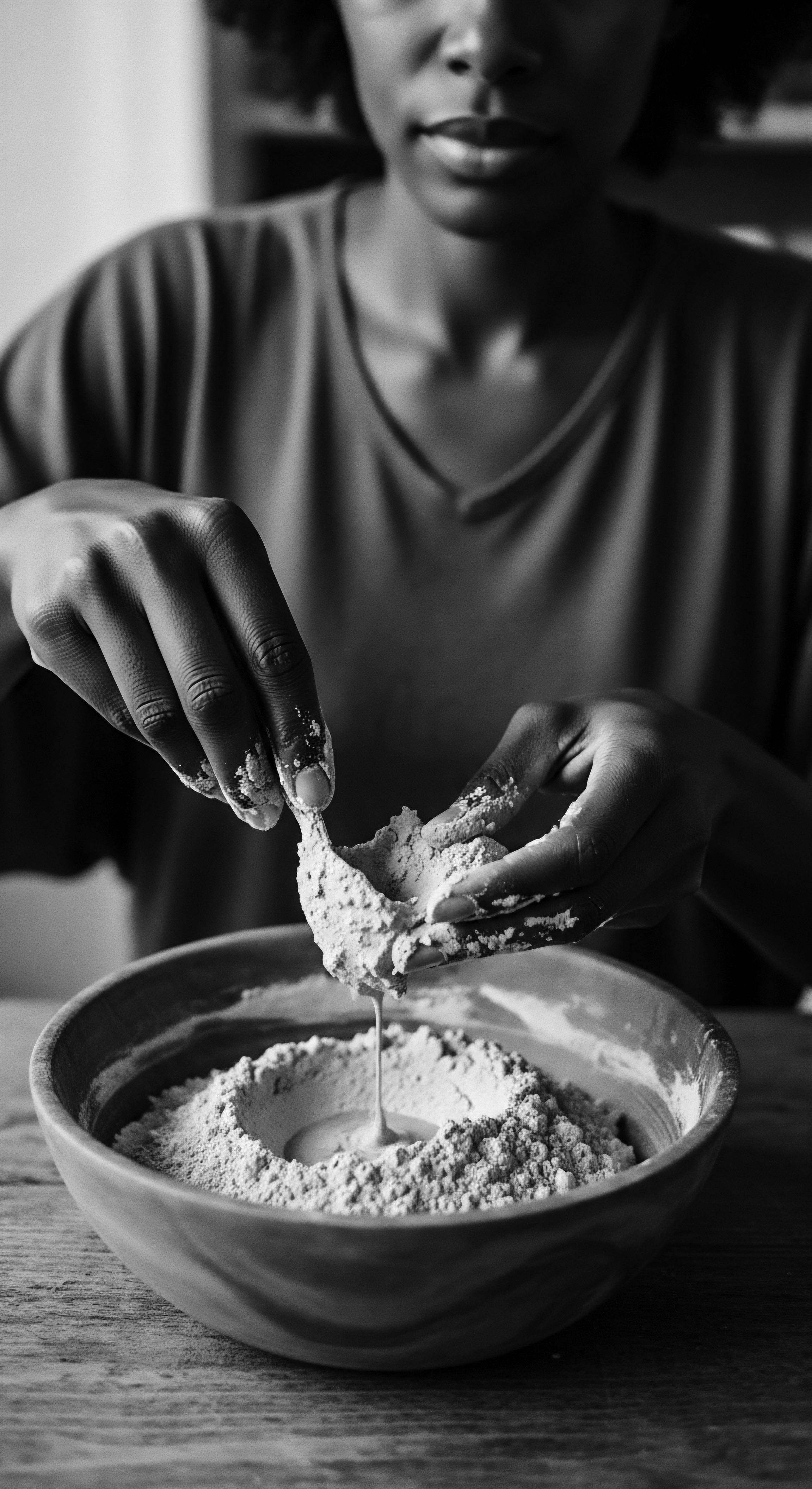
Reflection on the Heritage of Community Strength
As we journey through the layered meaning of Community Strength, particularly through the intricate tapestry of textured hair heritage, a profound realization settles upon us ❉ this strength is a timeless echo from the source. It is the wisdom whispered from ancient hands, traversing oceans and generations, finding new voices in every coil and curl. The heritage of Community Strength reminds us that hair, in its deepest sense, was never simply about aesthetics; it was a conduit for collective memory, a marker of identity, and a profound declaration of self. It is the enduring legacy of communities who understood that nurturing one strand was, in essence, nurturing the whole.
This enduring communal spirit, stretching from ancestral lands to contemporary salons and digital spaces, serves as a testament to the indelible connection between hair and personhood. The tender thread of shared care, passed through familial lines and communal gatherings, has ensured that despite attempts to erase or diminish Black and mixed-race hair, its spirit remains vibrant and ever-present. It speaks to a resilience born from collective will, a celebration of heritage that transforms acts of care into profound rituals of affirmation. The path ahead invites us to continue listening to these echoes, to seek out the quiet resilience within our shared hair narratives, and to recognize that the Community Strength of today is a direct descendant of the ancestral wisdom that preceded us.
The wisdom inherent in Community Strength urges us to consider our own roles in upholding this sacred heritage. Every shared tip, every encouraging word, every act of communal grooming contributes to the continued vitality of this profound collective power. It is a continuous unfolding, a living testament to the truth that our hair, in all its unique texture and glory, is a beautiful reflection of a community that has always found strength in togetherness. This connection to ancestral practices, whether through the conscious use of specific botanical ingredients or the simple act of shared time during hair care, reaffirms a deep and abiding truth ❉ our heritage is not just something we remember; it is something we live, breathe, and embody, strand by beautiful strand.
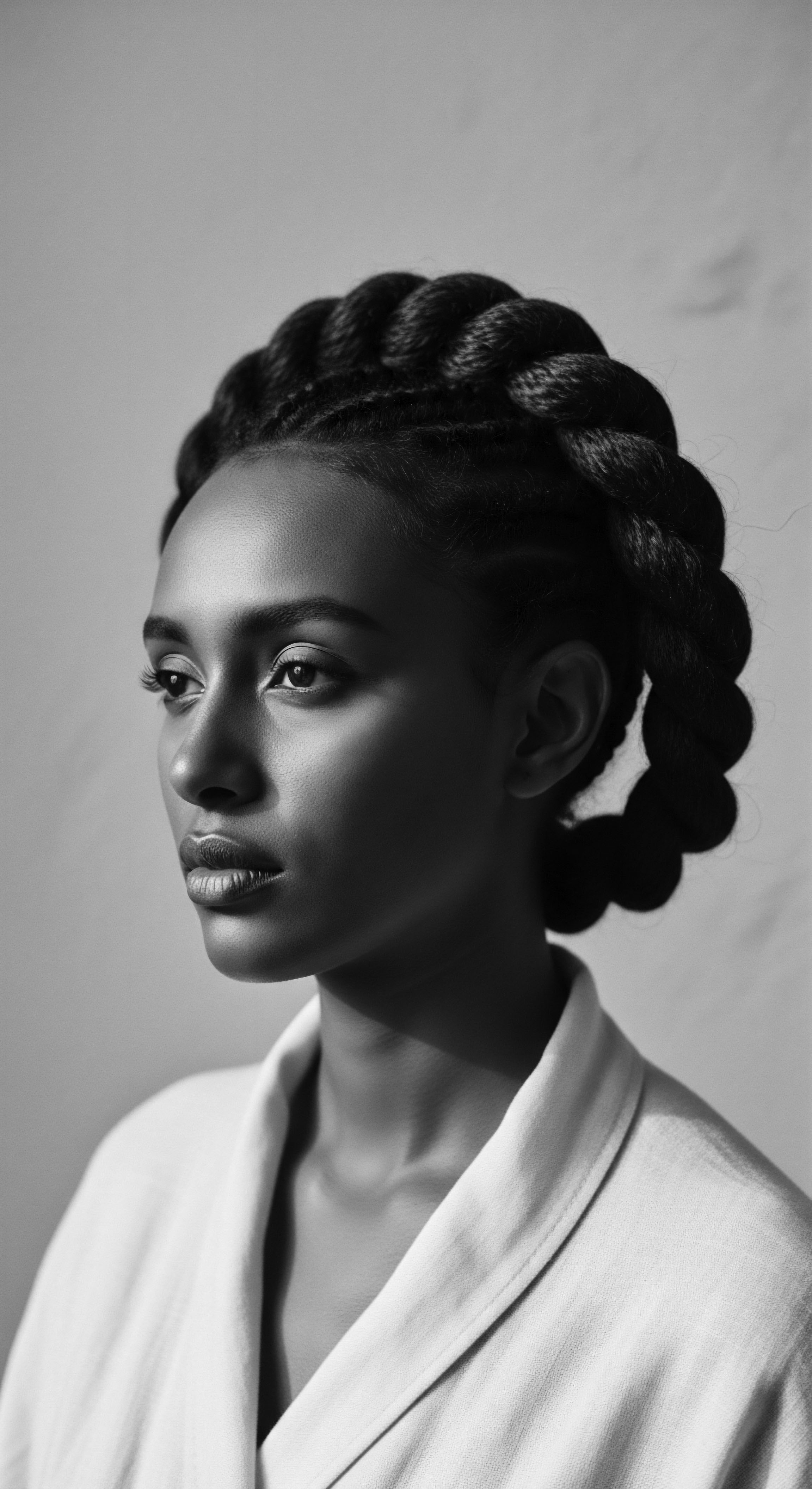
References
- Price, Richard. 1993. The Guiana Maroons ❉ A Historical and Bibliographical Introduction. Johns Hopkins University Press.
- Byrd, Ayana, and Lori L. Tharps. 2014. Hair Story ❉ Untangling the Roots of Black Hair in America. St. Martin’s Press.
- Mercer, Kobena. 1994. Welcome to the Jungle ❉ New Positions in Black Cultural Studies. Routledge.
- Hooks, Bell. 1992. Black Looks ❉ Race and Representation. South End Press.
- Rooks, Noliwe M. 1996. Hair Raising ❉ Beauty, Culture, and African American Women. Rutgers University Press.
- Patton, Tracey Owens. 2006. “African-American Women and the Politics of Hair.” NWSA Journal 18, no. 2 ❉ 135–151.
- Okoro, Nkiru. 2013. Natural Hair in the African Diaspora ❉ Collective Memory and Communal Practice. University of California Press.
